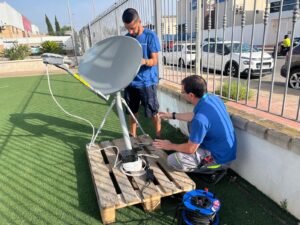Fifteen years after marking a milestone with the introduction of the first surgical robot in Gipuzkoa, Policlínica Gipuzkoa remains at the forefront of innovation in robotic surgery after incorporating the latest model of the Da Vinci X surgical robot. This advancement represents multiple benefits for patients and positions Quirónsalud as a leader in technological innovation and healthcare excellence. Currently, almost half of the hospitals in the group have this advanced technology in Spain.
Gregorio Garmendia, a urologist at Policlínica Gipuzkoa, explains that the new Da Vinci X system significantly reduces bleeding during operations, allows for shorter hospital stays, and speeds up the functional recovery of patients. He also highlights that robotic surgery has radically transformed interventions in the prostate, kidney, bladder, and pelvic floor, increasing both the complexity of operations and the precision of procedures.
Dr. Garmendia, who performs over one hundred robotic surgeries annually, states that this technology not only increases precision and reduces the invasiveness of operations, but also considerably improves the quality of life for patients. Although the differences from previous models are not drastic, the Da Vinci X features notable improvements such as optimized vision, miniaturization of surgical instruments, improved ergonomics, and new applications in specialties that were previously more limited.
In the specific case of prostate cancer patients, the urologist points out that the benefits are particularly significant. Thanks to robotic surgery, vital functions like urinary continence and erectile function can be preserved, significantly enhancing quality of life after the operation. Garmendia states that currently, the majority of prostate cancer surgeries at Policlínica Gipuzkoa are performed using robotic surgery.
Beyond the field of urology, robotic surgery is successfully employed in procedures in the bladder, kidney, and pelvic floor, as well as in general and digestive surgeries. Robotic technology provides access to complex anatomical areas with great precision, improving the safety and effectiveness of procedures, benefiting both patients and surgeons. Dr. Garmendia concludes that robotics represents a natural evolution of laparoscopy, significantly contributing to improving the lives of patients and optimizing surgical work.
Source: MiMub in Spanish










